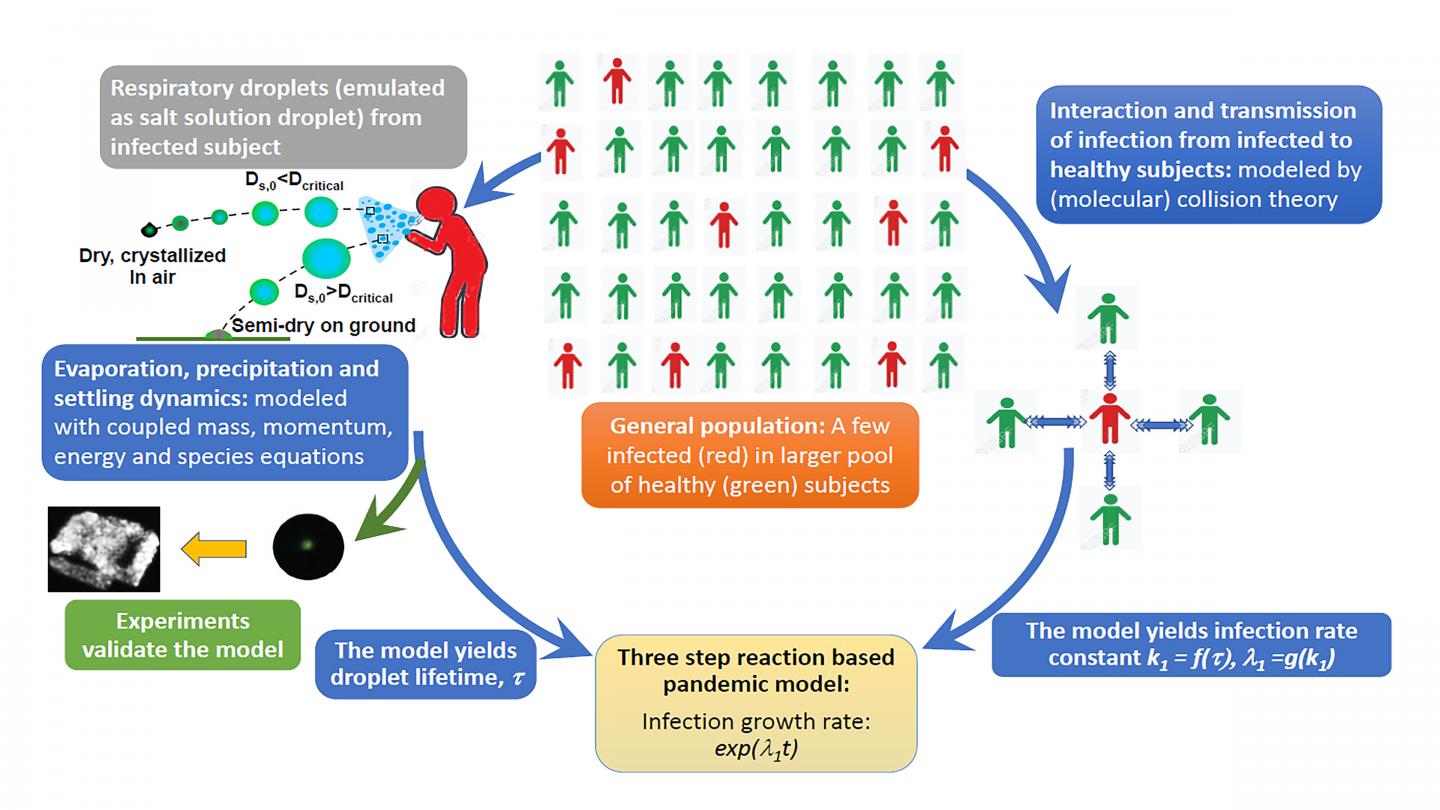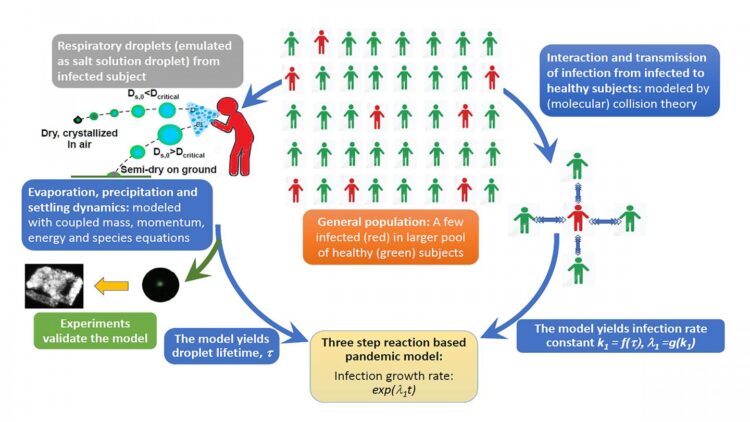Mathematical model sheds light on the motion and evaporation of respiratory droplets responsible for disease transmission

Credit: Swetaprovo Chaudhuri, Saptarshi Basu, Prasenjit Kabi, Vishnu R Unni and Abhishek Saha
WASHINGTON, June 30, 2020 — It is well established that the SARS-CoV-2 virus responsible for the COVID-19 disease is transmitted via respiratory droplets that infected people eject when they cough, sneeze or talk. Consequently, much research targets better understanding droplet motion and evaporation to understand transmission more deeply.
In a paper in Physics of Fluids, by AIP Publishing, researchers developed a mathematical model, proceeding from first principles, for the early phases of a COVID-19-like pandemic using the aerodynamics and evaporation characteristics of respiratory droplets.
The researchers modeled the pandemic dynamics with a reaction mechanism, wherein each reaction has a rate constant obtained by calculating the droplet collision frequency. They then compared the droplet cloud ejected by an infected person versus one by a healthy person.
“The size of the droplet cloud, the distance it travels, and the droplet lifetimes are, therefore, all important factors that we calculated using conservation of mass, momentum, energy and species,” said Swetaprovo Chaudhuri, one of the authors.
The model could be used to estimate approximately how long droplets can survive, how far they can travel, and which size of droplet survives for how long. Though, as Chaudhuri adds, “The actual situation could be complicated by wind, turbulence, air-recirculation or many other effects.”
“Without wind and depending on the ambient condition, we found droplets travel between 8 to 13 feet before they evaporate or escape,” said Abhishek Saha, a co-author.
This finding implies that social distancing at perhaps greater than 6 feet is essential.
Furthermore, the initial size of the longest surviving droplets is in the range of 18-50 microns, meaning masks can indeed help. These findings could help inform reopening measures for schools and offices looking at student or employee density.
“This model is not claiming to predict the exact spread of COVID-19,” said Saptarshi Basu, another author. “But, our work shows that droplet evaporation or desiccation time is highly sensitive to the ambient temperature and relative humidity.”
More broadly, this multiscale model and the firm theoretical underpinning that connects the two scales — macroscale pandemic dynamics and the microscale droplet physics — could emerge as a powerful tool in clarifying the role of environment on infection spread through respiratory droplets.
###
The article, “Modeling the role of respiratory droplets in Covid-19 type pandemics,” is authored by Swetaprovo Chaudhuri, Saptarshi Basu, Prasenjit Kabi, Vishnu R. Unni and Abhishek Saha. The article will appear in Physics of Fluids on June 30, 2020 (DOI: 10.1063/5.0015984). After that date, it can be accessed at https:/
ABOUT THE JOURNAL
Physics of Fluids is devoted to the publication of original theoretical, computational, and experimental contributions to the dynamics of gases, liquids, and complex or multiphase fluids. See https:/
Media Contact
Larry Frum
[email protected]
Related Journal Article
http://dx.





